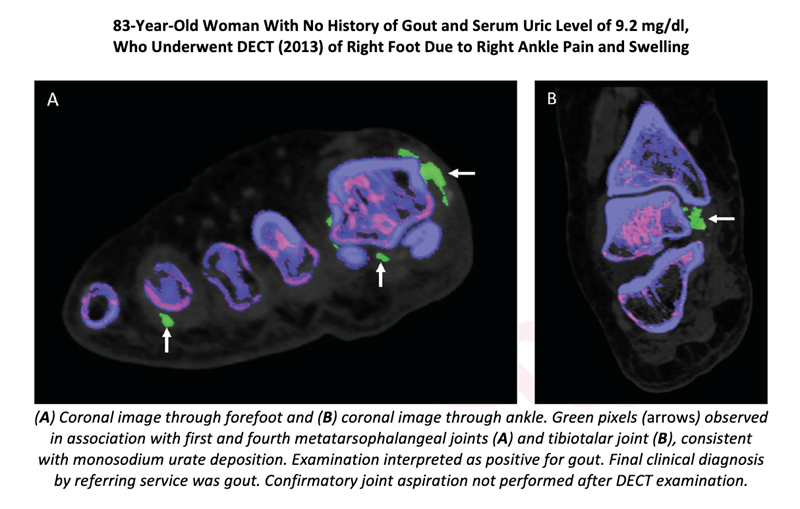Adopting Dual-energy CT Leads to Lower Equivocal Interpretations in Gout
 Technological improvements, clinical practice changes, and growing experience among radiologists and referrers alike are contributing to the evolving role of dual-energy CT (DECT) in gout workup.
Technological improvements, clinical practice changes, and growing experience among radiologists and referrers alike are contributing to the evolving role of dual-energy CT (DECT) in gout workup.
A retrospective study published in the American Journal of Roentgenology (AJR) compared DECT examinations performed for gout in 2013 and 2019, the frequency of equivocal interpretations was significantly lower in 2019, “possibly related to interval technologic improvements,” lead researcher Francis I. Baffour of Mayo Clinic in Rochester, MN concluded. “Negative examinations were less frequently followed by joint aspirations in 2019, possibly reflecting increasing clinical acceptance of the DECT results.”
Baffour and colleagues’ study included 100 consecutive adult patients who underwent DECT for gout evaluation in each of two periods, beginning in March 2013 and September 2019. DECT examinations in 2013 used a second-generation scanner (140 kV with 0.4 mm tin filter); in 2019, a third-generation scanner (150 kV with 0.6 mm tin filter) with improved spectral separation was used. Original DECT reports were classified as positive, negative, or equivocal for monosodium urate crystals indicative of gout. Joint aspirations occurring post examination were recorded via medical record review.
Compared with the 2013 DECT examinations performed for suspected gout, those performed in 2019 had a significantly lower frequency of equivocal interpretations (16.0% vs. 33.0%, p<.001). Moreover, joint aspiration was significantly less likely to be performed after negative DECT interpretations in 2019 than in 2013 (2.1% vs. 17.4%, p=.02).
“The findings indicate an evolving role for DECT in the evaluation of gout following an institution’s routine adoption of the technology for this purpose,” the authors added.
Related Articles
Citation
Adopting Dual-energy CT Leads to Lower Equivocal Interpretations in Gout. Appl Radiol.
January 27, 2022